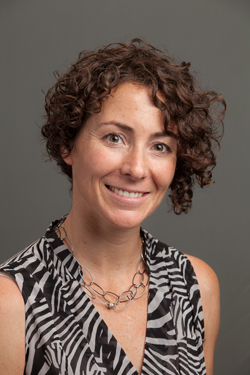Is Disability Societally Created?

by Katie Oliviero, assistant professor of women's & gender studies
Disability is central to intersectional women’s, gender and sexuality studies both conceptually and politically. Historically, the language of impairment was used to justify the diminished sociolegal status of women, immigrants, people of color and those without property. Aristotle infamously described women as “misbegotten men.” This language of impairment points to how ability was viewed not only as a physical or a mental trait, but also as a capacity that helped determine which groups were fit to be recognized as fully participating social citizens.
Metaphors
of impairment literally shaped citizenship frameworks in countries like the U.S.
People perceived as having impairments were among the earliest groups forbidden
to immigrate. Migrants from Asia, South America, southern and eastern Europe
were scrutinized more closely because they were viewed as culturally
handicapped. Slavery and patriarchal legal formulations forbidding women to be
educated or capping their wages were also justified on the grounds that these
groups were mentally and physically deficient. Starting in the 20th century, gays and lesbians were viewed as “unfit” not only to migrate, but also to serve in
the government and public service sectors in fields such as teaching. And the state has
always shown an interest in encouraging “social fitness” in ways that reinforce
racial, sexual and gendered norms—most explicitly through eugenic programs
that coercively sterilized people with impairments and women of color.
This brief history points to how ability informs our fundamental understandings of belonging in ways that are shaped by illicit identity-based presumptions. In their best manifestations, the ADA and disability activism are powerful because they prohibit some kinds of discrimination and enhance access to essential resources, but also because they challenge organizing our physical, social and legal world around narrow notions of ability. While its work is still incomplete, the ADA marked a moment when disability was recognized as a condition that resides not in individuals with impairments, but a world that doesn’t provide the resources to accommodate those differences—whether in the form of curb cuts, individualized educational plans, or access to other resources. In short, the “dis” in disability resides not in an individual, but an ableist society that enables some groups over others.
As a legal scholar, I get excited about how disability activists expand our notion of what constitutes ability because diversifying these understandings opens the door to exploring how government and social structures can better ensure that a range of people have access to the resources and opportunities to not only survive with an impairment—but also thrive and change our legal and social structures through it.